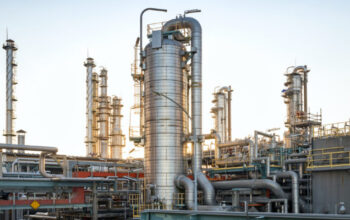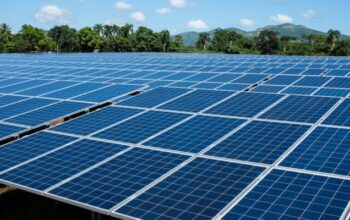We encourage all parties to investigate – and invest in – Africa’s rising stars for long-term energy solutions
Africa’s oil and gas industry is going to breathe new life into many African economies and will create new opportunities for every many Africans in 2023. During the recent African Energy Week, many players and host nations outlined some of the most ambitious plans produce more natural gas, diversify our economies and create more jobs especially for women and our young people. This is a better plan than development aid.
In September 2022, the EU approved an additional 15 million euros to support counterinsurgency efforts in Mozambique. That fresh funding – intended to protect the natural gas-rich area of Cabo Delgado – brings the bloc’s total support up to 104 million euros this year.
This sudden involvement in the area’s five-year security saga highlights Europe’s newfound interest in a stable, energy-producing Africa.
Oil prices spiked to $85 a barrel by November and currently show no signs of slowing. The Russia-Ukraine conflict has sent shockwaves through the entire oil and gas industry, with Western nations, particularly in the EU, searching for alternate fuel sources. While the U.S. immediately banned Russian oil imports in March, similar measures by the U.K. and EU were put off until December.
As we point out in our released report, “The State of African Energy: 2023 Outlook,” During African Energy Week, African oil and gas production remains steady — and fairly immune to the Ukraine-Russia conflict.
Oil – Marginal increase
Take Nigeria, whose oil production hit a 30-year low this August but is now projected to see an overall increase through 2023. By tackling its most dramatic setbacks, the West African nation has managed to maintain equilibrium.
One such setback came to light at the Forcados crude oil terminal in July, when operators discovered leaks around the loading buoy, halting exports from the terminal. The operators, Nigerian National Petroleum Company (NNPC) Limited and Shell Petroleum Development Company (SPDC) of Nigeria, promptly promised to repair the leaks and resume exports by late October — and they met the self-appointed deadline.
Last summer also saw a huge escalation in pipeline theft that culminated in Nigeria losing its spot as Africa’s biggest oil producer. Ironically, this may have served as a much-needed wake-up call to tackle the decades-old problem of theft. After a July and August that saw Nigeria’s output fall below 1 million bpd, the government awarded security contracts to protect the pipelines. The tactic yielded fruit within a month when contractors uncovered an illicit pipeline that had been siphoning stolen oil for nine years. By November, Nigeria’s output had climbed back to 1 million bpd.
This sudden involvement in the area’s five-year security saga highlights Europe’s newfound interest in a stable, energy-producing Africa
Libya experienced an even more dramatic pendulum, with production falling from 1.2 million barrels per day (bpd) to 100,000 bpd this spring. In a now-familiar pattern, the conflict between two competing governments led to production outages and blockades. By August, however, production had returned to a steady 1.2 million bpd.
These setbacks in Nigeria and Libya have something in common: The solutions came from within. In a world reeling from the ripple effects of the Ukraine conflict, any producer that can tackle its largest issues in-house, without relying on geopolitical trends, deserves some notice.
Europe seems to share this attitude. Total and Eni are “close” to finalizing oil production deals with Libya, where BP is also due to begin new onshore drilling. These reassuring signs all address the other major challenge shared by Libya, Angola, and Nigeria: Lack of new projects and foreign investment. Exxon also recently discovered a new well in Angola, another nation in need of fresh prospects. I had a chance to keynote the Angola oil and gas gathering and held discussions with key industry players. There is fresh hope and excitement on the horizon.
Even without factoring in these recent deals, our 2023 report predicts marginal growth for Africa’s oil production at just over 7 million bpd. Intriguingly, a stable Libya and fresh projects could see that output grow to 7.25 million bpd by 2030. In the Russia-roiled short term, Africa’s sheer consistency offers relief to energy-hungry nations – and in the long term, potential energy security.
Gas – Growing Steady
As with oil, Africa’s natural gas output remains quite resilient to the Ukraine-Russia conflict. Some nations have already stepped up their exports to Europe, and several major projects are on track for production by 2030. While our report predicts a marginal decline in production for the short term, the continent’s overall future looks bright.
Take Algeria, whose Berkine field went from discovery to production in record-breaking time. NOC Sonatrach discovered the 12 trillion cubic feet (tcf) in reserves in March and, in partnership with Italian major Eni, began production by November. The deal was enabled by Algeria’s international oil company (IOC)-friendly hydrocarbon law and bodes well for Eni’s and Sonatrach’s agreement to increase Italian imports by 20%.
Similarly accommodating of IOCs, Mauritania and Senegal are also growing strong. Their Tortue/Ahmeyim field contains approximately 15 tcf of gas, with operators hoping to begin production in 2024. Mauritania is also in talks with BP to develop their equally rich BirAllah (https://bit.ly/3HwydU8) gas field. While young in the industry, the two nations have proven quite competent at cooperating with both each other and international majors.
Even more intriguing, war-torn Mozambique began exporting natural gas to Europe this November – an unexpected first. This milestone likely owes something to the EU’s recent investment in Mozambique’s security. The question remains, of course, whether Mozambique will remain stable enough to continue these gains and truly become a part of Europe’s energy security solution.
Short- and Long-Term Goals
On the surface, the state of Africa’s energy is a simple one – the continent’s production should remain steady in the short-term and has already offered Europe some energy relief. Underneath the surface, of course, individual nations face different circumstances and play their own parts in the larger picture. Libya, with its history of alternating peaceful production and violent dry spells, is a very different nation from a stable newcomer like Senegal. As the West eyes Africa for long-term energy security and the green transition, it behooves them to examine individual nations for their strengths, weaknesses, and unique opportunities for partnership. We encourage all parties to investigate – and invest in – Africa’s rising stars for long-term energy solutions.
![]()




